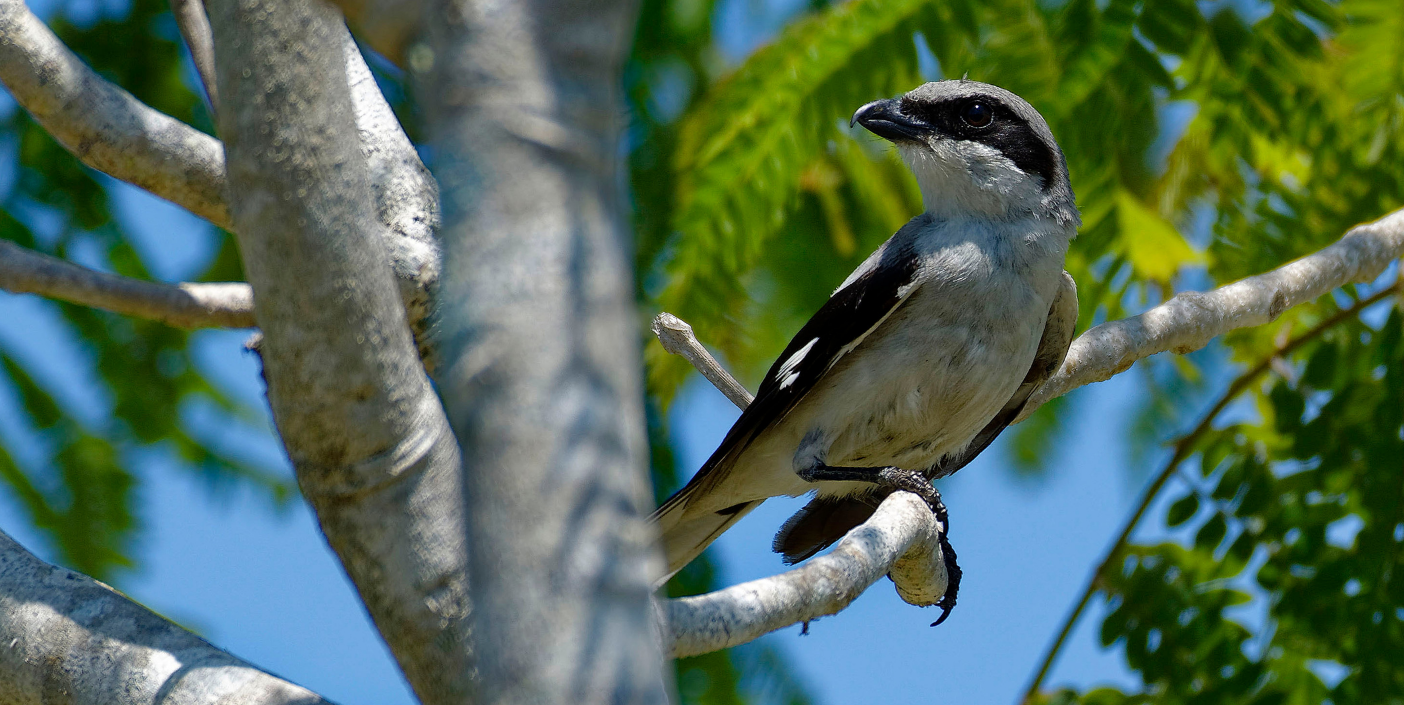

This blog supports this year’s Intertwined theme, which explores the connections in the natural world and the bond between people and plants.
Rarely are there moments of stagnant silence at Naples Botanical Garden. Here, nature conducts a nonstop symphony: wind rustling, water trickling, bamboo culms creaking, and birds — those operatic superstars — singing, calling, and flapping their wings at all hours. Birds have a special place in the Garden, with over 200 species feeding, nesting, resting, or taking up residence on property. This ever-growing community of feathered friends does more than inspire visiting bird watchers; it indicates the success of the Garden’s ecosystem restoration efforts in its 90 acres of preserve land and overall upkeep of the cultivated gardens.

A healthy and biodiverse plant ecosystem results in a healthy and biodiverse animal population. The ties between the birds and the trees are inextricably intertwined. Birds rely on plants for shelter, nesting, courtship, hunting perches, or habitats for prey like caterpillars and fruit. Plants rely on birds for their poop. Yes, you read that right, poop! The fruits that birds eat contain seeds, which once digested, are “deposited” by winged gardeners. Bird waste is also an important nutrient for epiphytic plants (plants that grow on other plants), such as bromeliads (Bromeliaceae) and tillandsias (Tillandsia spp.), as their precarious position among the canopy prevents them from obtaining soil-bound nutrients. Of course, the birds’ back-end byproduct enhances overall soil quality for terrestrial plants as well. This interconnection means that any change in plant or bird populations directly affects the other.

Each week, a group of tireless birders spends the morning scouring the Garden for every last species they can spot in their binoculars, scopes, and long-lens cameras. Led by longtime volunteer Ed Kemnitzer, the data collected from these outings helps the Garden further understand the relationships between birds and plants.
For example, Ed recently made this keen observation involving turkey vultures (Cathartes aura): “If only we had some of these birds radio tagged. Is it possible we’re seeing a shift in migration patterns? After all, a man can dream of discoveries, revelations, and epiphanies.” This is Ed’s typical report style — witty, insightful, and eloquent.

He has also observed a “trusty merlin (Falco columbarius)” regularly found perching on a stand of dead melaleuca (Melaleuca quinquenervia) trees just beyond the south end of the restored marsh ecosystem off the White Birding Tower.

Speaking of restored ecosystems, the Garden’s efforts to include native plantings in bioswales between parking rows have not gone unnoticed by birds and birders alike.
“Our visitor parking lot has taken on a whole new perspective as the swales have become lush, green oases. In my dreams, this approach will become a model for developers everywhere,” muses Ed.
In my own short time at the Garden, I have witnessed the mutual relationship between the birds and the trees numerous times. As an intern, I excitedly watched as a chuck–will‘s–widow (Antrostomus carolinensis) guarded its eggs, conspicuously hidden among fallen pine needles below a towering slash pine (Pinus elliotii). In my many trips around the Preserve’s lake trail, I’ve squealed with delight upon the remarkably regular sight of a loggerhead shrike (Lanius ludovicianus). The reliable shrike utilizes various trees in our dedicated future garden space — along the southern side of Lake Tupke — to perch and search for vulnerable prey that it will catch and skewer on sharp branches or posts.

I’ve watched birds flock to other plants for nourishment, too. The showy berries of American beautyberry (Callicarpa Americana) and dahoon holly (Ilex cassine) provide a tasty buffet for crows (Corvus spp.), blue jays (Cyanocitta cristata), wrens (Troglodytidae), sparrows (Passerellidae), northern mockingbirds (Mimus polyglottos) and many others. The tropical sage’s (Salvia coccinea) vibrant red flowers, which brighten both edges of preserve land and the cultivated gardens, are a favorite nectar stop for ruby-throated hummingbirds (Archilochus colubris).

Without the efforts of the Conservation and Horticulture teams, it would be impossible to provide a space where Ed and our team of birders could report record-breaking days of raptor presence with birds like the Northern Harrier, American Kestrel, and Merlin, along with some of the more regular predators in flight.
The Garden’s lush habitats and enthusiastic birders have opened a world of bird curiosity that just a few short years ago I might have scoffed at. Firsthand observations of the deeply intertwined relationships between plants and birds will lead any Garden-goer to only one conclusion: Plants are the foundation for all life on Earth.
Interested in birding in the Garden? Join the birding group on Sundays and Tuesdays from 8 – 10:30am now through April 26, 2022. Click HERE for more information.
 About the Author
About the Author
Emily Kless is the Interpretation Specialist for Naples Botanical Garden. Emily is always excited by the opportunity to learn. Outside of the Garden, you can find Emily and her service dog, Clementine, hiking the region’s various trails (and sometimes forging their own) to admire native plants and birds.


